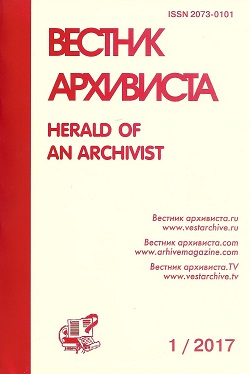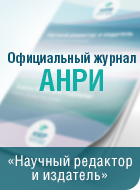Scientific article
УДК 93/94+336.1.07+651.77+930.23+651.753.012.467+651.713+930.85+336.256
doi 10.28995/2073-0101-2023-1-221-232
Petin, Dmitry I.
Omsk State Technical University, Omsk, Russian Federation
Speculation of Withdrawn White Guard Banknotes: The Omsk Incident (1920)
Abstract
This article analyzes an incident of speculation on withdrawn White Guard banknotes that took place in Omsk in the first months of the Soviet power restoration. It is of interest both from the standpoint of the history of finance and currency and from that of the history of law and urban everyday life. Illegal actions suppressed in 1920 by the Soviet police are spiced up by the fact that the main defendants were representatives of Eastern European peoples who, for various reasons, found themselves in Omsk: the Ukrainian, the Hungarian, the German, and the Chinese. Moreover, the “Chinese track,” notorious in the Siberian economy of the era, had actually created conditions for this rare type of speculation. The study draws on unpublished documents identified by the author in an archival criminal case considered in 1920 by the People's Court of the 1st section of the Omsk uezd of the Omsk uezd bureau of justice. They are stored in the Historical Archive of the Omsk Region in the fond of above mentioned judicial body. The methodological basis of the study is anthropological and systematic approaches, as well as problem-chronological method. This theoretical corpus enables to follow the logic of developments in the region’s socio-economic sphere as fully as possible and to explain the causes of the crime, bringing them into correlation with certain people who acted in specific historical situation of the military revolutionary period. The considered episode is unique and revealing in a number of ways. It characterizes the life of the West Siberian townspeople at the final stage of the Civil War in Russia and demonstrates what sophisticated measures the population (including former prisoners of the First World War, refugees, numerous representatives of underclass) was forced to take in order to survive. The case allows us to assess the peculiarities of the work of law enforcement and justice during Soviet power restoration in Western Siberia. This publication may be of interest to a wide range of readers: specialists in Russian finance and currency, Soviet law enforcement system, population’s adaptation to social cataclysms, and Siberian everyday life during the Civil War in Russia.
Keywords
Historical source, social adaptation, everyday life, Civil War, Soviet power, finance, currency, speculation, military prisoners, Chinese, Omsk.
Download the article: petin_doi
References
ANFERTIEV, I. A. Politicheskii konstruktivizm pravyashchei partii. Programmnye ustanovki RSDRP(b)–RKP(b)–VKP(b). 1917–1930-e gody: monografiya [Political constructionism of the ruling party: Program agenda of the RSDLP (B)—RCP (B)—AUCP (B): 1917–30s: A monograph. In Russ.]. Moscow, Infra-М. publ., 2020, 555 p.
ANFERTIEV, I. A. Rukovodstvo RKP (b) v usloviyakh perekhoda k novoi ekonomicheskoi politike: Tsentral’naya kontrol’naya komissiya i “chistki” partiinykh kadrov [The leadership of the RCP (B) in the context of the transition to the new economic policy: The Central Control Commission and the “purges” of party cadres. In Russ.]. IN: Novyi istoricheskii vestnik, 2015, no. 3, pp. 65–78.
DAVYDOV, A. Yu. The Third Front in the Russian Civil War: Profiteering in the Breaking of the Bolsheviks Blockade of the Village. IN: Noveishaya istoriya Rossii, 2018, vol. 8, no. 2, pp. 337–354.
KOKOULIN, V. G. The daily life of the townspeople of Siberia in the military-revolutionary years (July 1914 – March 1921). Novosibirsk, 2013, 385 p.
KHODYAKOV, M. V. Money of the Revolution and the Civil War: 1917–20. St. Petersburg, 2019, 312 p.
RYNKOV, V. M. The financial policy of the anti-Bolshevik governments in the East of Russia (second half of 1918 – early 1920). Novosibirsk, 2006, 212 p.
TETERIN, V. I. From police to militsia: Criminal investigation organs of Perm gubernia in the days of revolution and Civil War in Russia. IN: Omskii nauchnyi vestnik. Seria. Obshchestvo. Istoriya. Sovremennost’, 2020, vol. 5, no. 1, pp. 40–47.
About the authors
Petin Dmitrii Igorevich, PhD in History, associate professor, Omsk State Technical University, department of history, philosophy and social Communications, assistant professor, Omsk, Russian Federation, +7–950–333–56–81, This e-mail address is being protected from spambots. You need JavaScript enabled to view it
Submitted 10.11.2022, published (for citation):
PETIN, D. I. Spekulyatsiya annulirovannymi belogvardeiskimi den'gami: omskii kazus 1920 g. [Speculation of Withdrawn White Guard Banknotes: The Omsk Incident (1920). In Russ.]. IN: Vestnik arhivista / Herald of an Archivist, 2023, no. 1, pp. 221-232. doi 10.28995/2073-0101-2023-1-221-232














